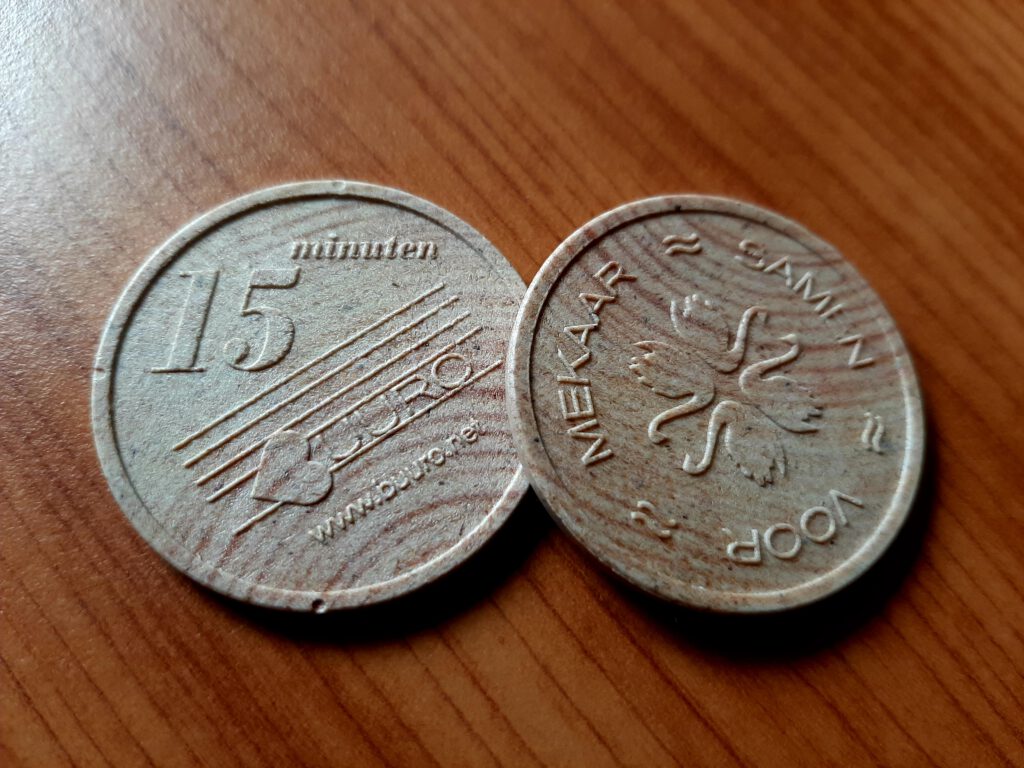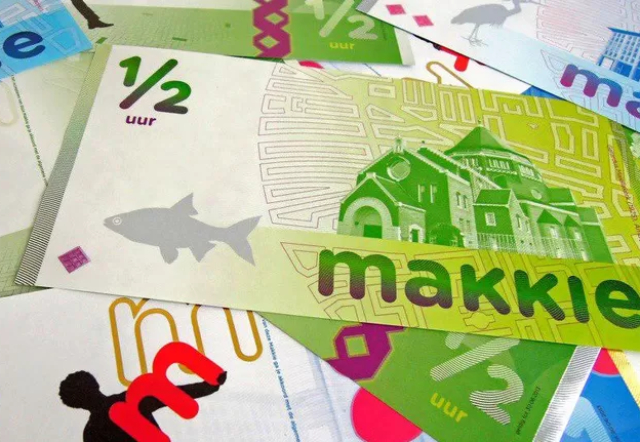In this new series of articles, our trainee Diane Golenvaux investigates different experiments with neighborhood currencies in three neighborhoods in Amsterdam. In each of these areas, the city has also started to experiment with Community Wealth Building. Each neighborhood has chosen a different structure for the currency scheme, so she will discuss how they could contribute to Community Wealth Building and what they can teach us about reorganizing money from the bottom-up. Can some of the monetary tools and organizational practices developed in Amsterdam inspire proposals for finance to advance greater social and climate justice?
Part 1: Governing money and local currencies
Money is so deeply anchored in our daily socio-economic life that we struggle to grasp it. Just as fish do not understand the nature of the water in which they swim, Bernard Lietaer says that money is the greatest mystery of our lives as social beings1. When I was a child, my parents used to take me to the Belgian coast for the summer. There, the kids spent their holidays making paper flowers and exchanging them, using shells as currency. You could find them scavenging for razor clams or sitting in the sand with their most beautiful flowers on display. These shells are to be found abundantly by the grey Belgian sea and were simply endowed with this monetary value by our common agreement for the time of the holiday. Their value lied in our desire for making beautiful things, enabling us to exchange them with other kids and making friends throughout the process.

Holding this childhood memory as I started taking interest in how to organize an economic transformation for social and climate justice, I had the intuition that many of the societal challenges we face today find their roots in our current monetary and financial system. And this intuition is shared, as the politics of money, credit and debt are being increasingly contested and experiments with alternative currencies are flourishing on an unprecedented scale.
In the wake of the Global Financial Crisis of 2008, it became clear that money is undemocratically governed and not designed to work in the interest of the many2. Financial markets and official monetary systems are core sectors of our economy. Indeed, money, credit and debt not only shape people’s economic life, their wellbeing, consumption and social relations, but also politics, the way that the economy and public provision is organized; yet, they are practically governed by private financial actors3.
In the current globalized capitalist order, critiques highlight that financial and monetary institutions lie at the roots of recurring economic crises4, promote unethical and risky economic behavior such as speculation, marginalize whole communities by limiting their access to financial resources and enforce the ecologically destructive imperative for economic growth5; all of this for the sake of capital accumulation6.

We tend to naturalize money’s institutional development and the functions it serves in our economy; however, money has taken on many different forms throughout history and is a social construct which exists in virtue of collaboration and trust in institutions7. Monetary architecture and governance can be shaped to serve different purposes than that of capital accumulation. And as we are facing important inflation and monetary instability nowadays, it is important to engage critically with these institutions and to document alternatives.
Since the 1970s, experiments with complementary currencies have proliferated, recent estimates ranging between 3500 and 5200 complementary currency systems worldwide8. Complementary currencies provide monetary tools and exchange networks that operate in parallel with the official ones, complementing them while contesting the monopoly of central and private banks over monetary governance. They take most concrete form in crypto currencies with global ambitions for free markets on the one hand, and in local currencies for fostering local development and solidarity within communities on the other9.

Local or community currencies are not rare in financial history and came in many different forms. Some of those include Local Exchange Trading System (LETS), which consists of a mutual credit system accounted for a bounded community; and Timebanks, in which people use time-measuring vouchers for exchanging services. They are bottom-up institutions that are not regulated by market or state institutions but by the social relations of the community in which they circulate10. Although they are issued by non-state civil actors such as local non-profits and civilian associations, they sometimes collaborate with local governments.
This phenomenon is also gaining weight in Amsterdam as neighbourhood currencies have been initiated by inhabitants in Oost, where the Makkie was established since 2012, in Noord with the recent launch of the time-bank Buuro, and in Zuid-Oost where they are developing a digital currency using blockchain. These projects recently gained support from the municipality. The 2022 coalition agreement between the Social Democrats (PvdA), the Greens (GroenLinks) and the Liberals (D66) puts forth that ‘the local economy can be strengthened if the money stays in the neighborhoods. We are launching a pilot with a digital currency to support local entrepreneurs and neighborhood centers’. In the context of the twenty years Masterplans drafted for the neighborhoods, the municipality is putting greater emphasis on community wealth building and working on developing a new digital currency for Nieuw-West as well11.

In the literature, local currencies are conceived as strengthening local economies, vehicles of social transformation and micro-acts of resistance against the globalized capitalist economy12. They show that money can be reclaimed, reimagined and reorganized in order to empower communities that are marginalized and vulnerable in the context of financial globalization. Furthermore, they undermine the principle of one currency per country, allowing for differences in regional and local needs13. Overall, they introduce interesting monetary governance and organizational practices, from the issuance of the currency, to credit cooperatives and anti-accumulation mechanisms, which foster greater resilience, solidarity and reciprocity within local communities14.
In the coming weeks, I will explore the three case studies in detail and share my insights with you.
.
- Lietaer, B. (2001). The future of money: Beyond greed and scarcity. Random House.
- Barinaga, E. (2020). “A Route to Commons-Based Democratic Monies? Embedding the Governance of Money in Traditional Communal Institutions.” Frontiers in Blockchain 3.
- Block, F. (2014). “Democratizing Finance*.” Politics and Society 42 (1): 3–28.
- Klein, S. (2020). “The power of money: critical theory, capitalism, and the politics of debt.”Constellations, 27(1), 19–35.
- Kuzminski, A. (2013). The ecology of money: debt, growth, and sustainability. Lexington Books.
- Hickel, J. (2022). Less is more: how degrowth will save the world. Penguin Random House Ireland.
- Ingham, G. (2004). The Nature of Money. John Wiley & Sons.
- Seyfang, G., & Longhurst, N. (2013). “Growing Green Money? Mapping Community Currencies for Sustainable Development.” Ecological Economics 86: 65–77.
- Barinaga, E. (2020). “A Route to Commons-Based Democratic Monies? Embedding the Governance of Money in Traditional Communal Institutions.” Frontiers in Blockchain 3.
- Meyer, C. & Hudon, M. (2017). “Alternative organizations in finance: Commoning in complementary currencies.” Organization, 24(5), 629–647.
- https://www.socialtrade.nl/nieuws-archief/amsterdam-kiest-voor-digitale-lokale-munt/
- Meyer, C. & Hudon, M. (2017). “Alternative organizations in finance: Commoning in complementary currencies.” Organization, 24(5), 629–647.
- Gomez, G. M., (ed). (2019). Monetary Plurality in Local, Regional and Global Economies. Financial History. London: Routledge.
- Lietaer, B. & Dunne, J. (2013). Rethinking Money: How New Currencies Turn Scarcity into Prosperity. Berrett-Koehler Publishers.
 ☰
☰